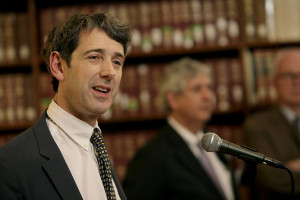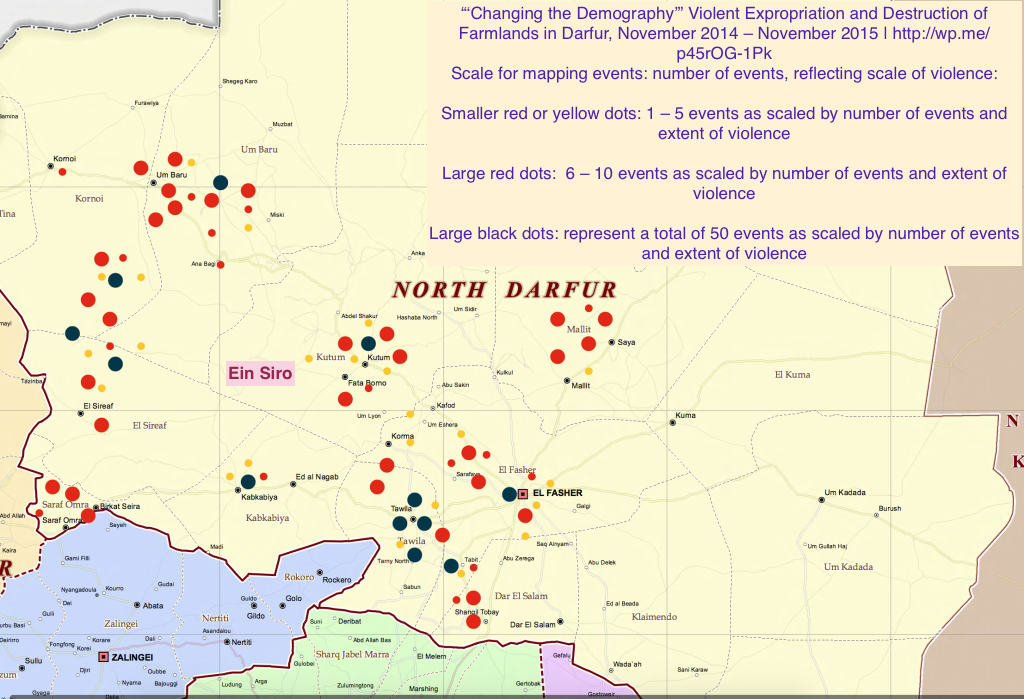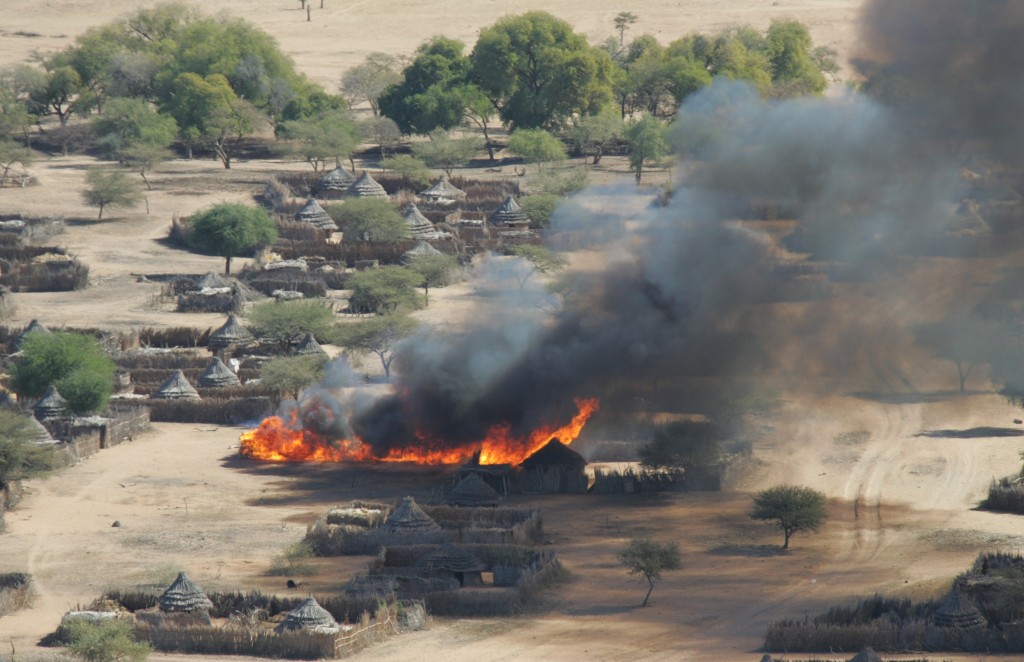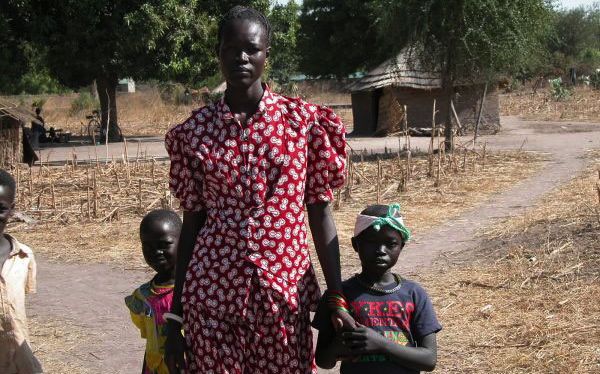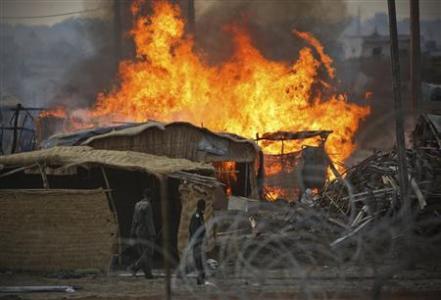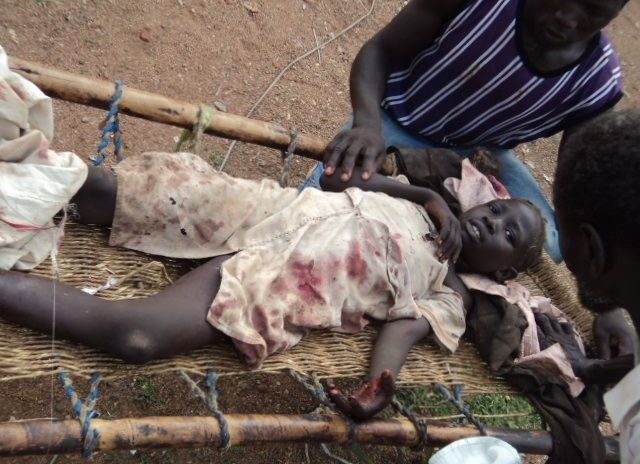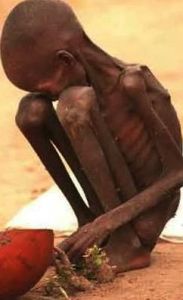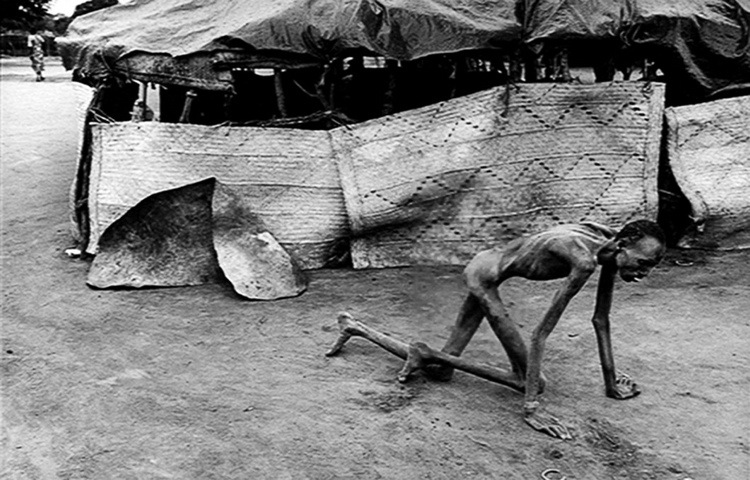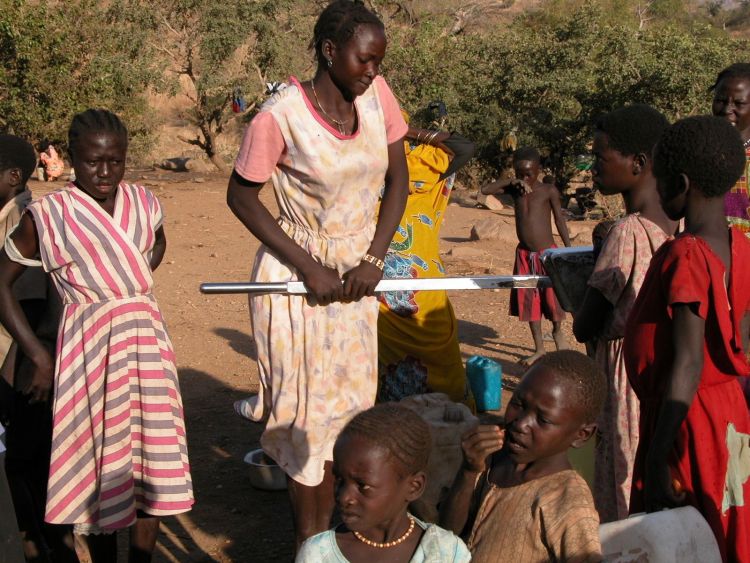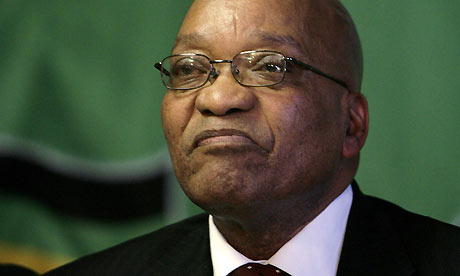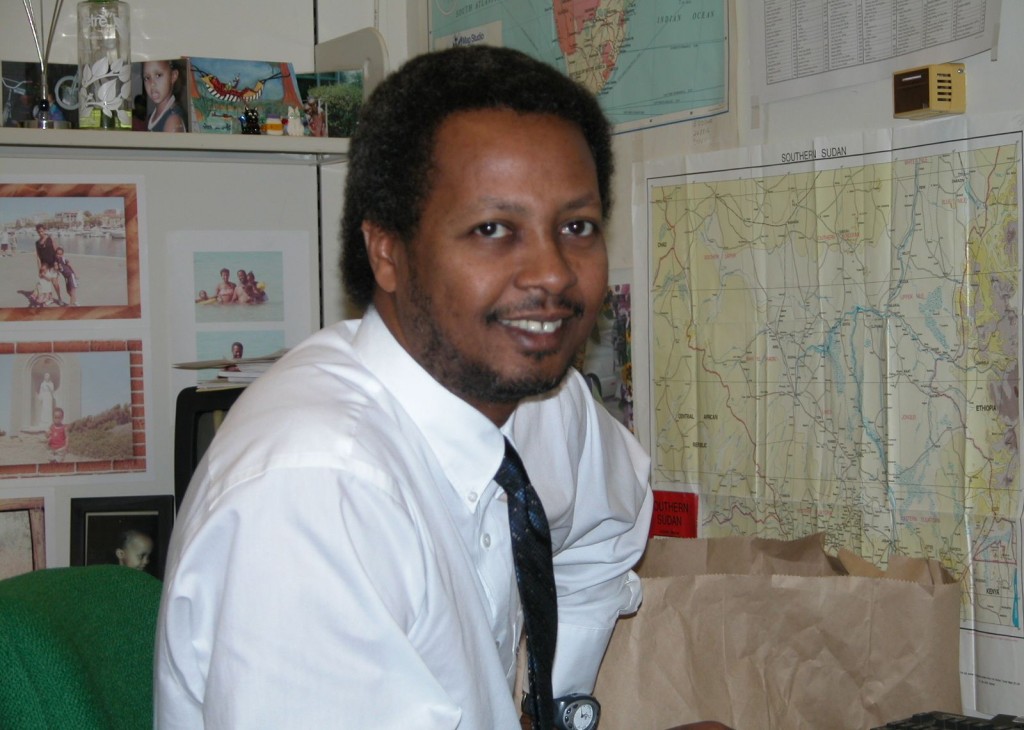“Alex de Waal and Sudan: A brief history of one man’s destructive misrepresentations,” September 14, 2015 (update to a brief in Sudan Tribune | 17 April 2015)
Eric Reeves | September 14, 2015 | http://sudanreeves.org/2015/09/04/alex-de-waal-and-sudan-a-brief-history-one-mans-destructive-misrepresentations-17-april-2015/
In April of this year Al Jazeera America aired a documentary that attempted to represent the character and causes of the catastrophe that has overtaken South Sudan following the explosive outbreak of violence in mid-December 2013 (“South Sudan: Country of Dreams”). It comprised a considerable number of interviews—of ordinary South Sudanese victims, a few of South Sudan’s officials on both sides of the terrible ethnic divide that now splits the country and the former national army (but no interviews with senior government officials)—and a number of Sudan “experts.” Ted Dagne, John Prendergast and I, were put on one side of the implicit narrative argument in this painfully unbalanced documentary; Alex de Waal, a long-time commentator and activist on Sudan represented the other side of this “argument.”
The film itself is often poorly or confusingly edited, even for someone who knows a fair bit about what occurred in South Sudan before and after December 15, 2013, when violence exploded, precipitating a brutal civil war that immediately took on a vicious ethnic character. It is much more confusing for those who do not know the history of South Sudan. The documentary is marred by key omissions, an imbalanced representation of the two “sides” in the conflict, and tendentious characterizations of Dagne, Prendergast, and myself. At one point we are described as giving our “devotion to the new rebel army in the South.” But the “new rebel army” came into being with the notable uprising in Bor (Jonglei State) in 1983, long before any of us began our work on bringing a just peace to all of Sudan. And it was to this just peace that we were “devoted,” not the Sudan People’s Liberation Army/Movement (SPLA/M) (the “Movement” part of the title is almost always omitted by de Waal and the documentary, even as it is a clear sign of a nascent political vision).
This is only one sign of the weakness of historical understanding evident in the documentary. It mentioned almost in passing that the three of us wrote a very open letter to Salva Kiir, President of South Sudan, in July 2013, warning in emphatic detail of the catastrophe that would likely unfold if Kiir and the Government of South Sudan (GOSS) did not address a number of key issues, including inter alia corruption, the absence of development, and the lack of progress toward a more democratic form of governance in the South. Although the filmmakers were informed by each of us that the letter was only the last, and perforce public, communication with Kiir and the GOSS—that we had been privately raising these issues with the government and working to help address them for several years prior—this fact was not noted in the brief reference to the July 2013 letter. This letter was widely circulated among South Sudanese, and received extensive coverage in the Sudan Tribune. A great many South Sudanese celebrated the letter as precisely what was needed from longtime friends of South Sudan.
Interviews with Dagne, Prendergast, and myself were truncated and misleadingly edited. This was not true for Alex de Waal, however, who was repeatedly given the opportunity to express his views in extended interview segments. Indeed, the filmmakers chose to promote the documentary with a very extended, self-serving, and deeply misleading interview with de Waal. I offer here a reprise of my substantial correction to the errors and misrepresentations that defined de Waal’s interview. The occasion is de Waal’s new, if very brief, foray into an analysis of South Sudan’s vast and complex crisis (“South Sudan: Why a Political Crackdown Accompanies a Peace Agreement,” African Arguments, September 11, 2015); in the space of 900 words, de Waal manages to oversimplify several critical issues, including cause-and-effect relationships, and in ways that likely make diplomatic resolution of the still-growing crisis more difficult.
Alex de Waal celebrating the opening of his “World Peace Foundation”
There is a powerful irony in the name of this “world peace foundation,” since de Waal’s career has been marked by participation in various diplomatic failures around Sudan’s conflicts, by highly inaccurate characterizations of conditions prevailing in various parts of Darfur, and by a notably abrupt change in his views on whether Darfur was the site of genocide—this shortly prior to his becoming an advisor to the African Union, which adamantly rejects the characterization of Darfur as the site of genocide.
The AU provided diplomatic auspices for negotiation of the ill-fated Abuja (Nigeria) peace agreement for Darfur (2006), an agreement that de Waal continued to defend long after it had become clear that the regime in Khartoum had no intention of fulfilling its obligations under the agreement. Moreover, it soon became evident that the agreement had exacerbated splits within the ranks of the Darfuri rebel groups, leading to an upsurge of much more chaotic violence.
Indeed, de Waal was so committed to the success of the long-dead Abuja Darfur Peace Agreement that he engaged in characterizations of the situation on the ground in Darfur that today seem almost indescribably perverse. One example will have to suffice in the present context.
Writing in May 2009 de Waal offered the following assessment:
A few days in Ain Siro is a reminder of what life used to be like in Darfur. The village is nestled in the spine of hills that runs due north from Jebel Marra into the desert. Protected by the mountains, the SLA has controlled the area for the last four years, and for many of the people in the vicinity, allowed an element of normality to return. Villages have been rebuilt, a rudimentary health service set up—and the school re-opened. (May 29, 2009 at SSRC blog: perhaps understandably, the link to de Waal’s piece on the Social Science Research Center has gone “dead”: http://blogs.ssrc.org/darfur/2009/05/28/a-taste-of-normality-in-ain-siro/).
From the example of Ain Siro, de Waal draws a conclusion that shows finally just how shameless his accommodation of Khartoum’s ambitions has been over the years:
Ain Siro shows how people on all sides are tired of war and, when given the chance, can make their own small but significant steps towards peace and normality. When Julie Flint first wrote about Ain Siro “saving itself” in 2007, most were sceptical that it represented anything significant. Two years on, not only has Ain Siro survived, but its model of self-help is less exceptional than it was.
(Click on map to enlarge)
A mapping of data for the massive violence in and around the Ein (Ain) Siro area celebrated by de Waal; see “Changing the Demography”: Violent Expropriation and Destruction of Farmlands in Darfur, November 2014 – November 2015″ | http://wp.me/p45rOG-1P4 ; for a similar mapping of violent rape of girls and women during the same period, see | http://wp.me/p45rOG-1Qy
De Waal’s claim about what Ein Siro represented simply could not have been more egregiously in error—something he has never acknowledged.
Given what has just been reported by Human Rights Watch (“‘Men With No Mercy’: Rapid Support Forces Attacks against Civilians in Darfur, Sudan,” September 9, 2015), de Waal’s foolish assessment of Darfur has become thoroughly grotesque. Ain Siro (North Darfur) is “ground zero” for the current assault by the Rapid Support Forces, Khartoum’s “new Janjaweed.” One excerpt, even one as extended as what appears below, cannot begin to do justice to the extraordinary research that has given us what is by far our most authoritative and detailed account of the realities facing de Waal’s Ain Siro, and countless other towns, villages, and hamlets in Darfur.
Current attacks, particularly in North Darfur, are all too reminiscent of the early years of the Darfur genocide
But such an excerpt—focusing exclusively on North Darfur—can make clear how preposterously presumptuous de Waal was in assessing Darfur in 2009:
The RSF departed South Darfur in early March 2014 and then redeployed in North Darfur. Over the ensuing two months the RSF attacked scores of villages near Korma, Kutum, Um Sidir, Hashaba, Bashim, Anka, Melit, Amarrai, Bir Maza, Gira, Sarafaya, and Tawila.[86] [Several of these locations are within 30 miles of Ein Siro—ER]
Human Rights Watch interviewed 64 victims and witnesses from RSF attacks in North Darfur and gathered the names of several dozen destroyed villages in southern North Darfur during this period.
The attacks followed similar patterns as in South Darfur. However, the witnesses who spoke to Human Rights Watch in North Darfur more often recognized the RSF personnel or local militia members fighting alongside the RSF. And several told Human Rights Watch that they knew where their animals had been taken.[87]
As was the case in South Darfur, the attacks took place primarily in villages where there was very little to no permanent government presence. Many of the areas had been controlled or contested by rebel movements, especially the SLA/MM, throughout the conflict.
Attacks near Kutum
Ein Siro is approximately 30 miles northwest of Kutum–ER]
RSF and other government forces attacked and destroyed villages in the Kutum locality in early April. The village of Birdik, along with neighboring villages, was attacked on April 7, 2014.[90] Khamisa, a woman in her 2’s from Birdik, said she was outside of her house early in the morning preparing tea for her husband, a local Arabic teacher, and their four children, when the village was attacked. She told Human Rights Watch:
When [the soldiers] entered I was the only one outside [of our hut]. They asked where my husband was. I told them I did not know. They started beating me. Then my husband came outside. And then they shot him. I was looking at him when he was shot. … They hit me with the butt of the gun when I refused to tell them where our money was. I fell down and then one man kicked me in the head with his boot. I started to bleed from my nose.
After the soldiers left her compound she fled the village with her children. Shortly after they left, a bomb fell on her house. Khamisa returned to the village hours later, after the bombing had stopped and the soldiers had left, to find that her husband’s body had been torn to pieces, apparently from the airstrikes. “I found only one leg from my husband,” she said.
Khamisa provided Human Rights Watch with the names of 10 family members who were killed during the attack. She also provided the names of five women who were abducted during the attack.
Soon after returning to the village, she decided to take her children to the town of Um Baru, “I put my two youngest children on a donkey and my two oldest children walked. It took us seven days to walk from Breidik to Um Baru. We had very little water.”
In Um Baru Khamisa ran into three of the women who were abducted in Birdik. All three told her that they had been raped by government forces. She decided to leave Um Baru…
Zeinab, 25, also from Birdik, woke up in the morning to find the village surrounded by military vehicles and armed men on horses. She said:
They went house to house looking for men. Any man who tried to escape was shot. I lost many members of my family. [I lost] uncles, cousins, and brothers. After they killed people the vehicles left and then the planes came and started bombing. … During the bombing we moved to the wadi. We hid in the wadi until the bombs stopped at about 4 p.m. … Everything was destroyed. There were just bodies and burned houses left. Old, blind people were burned. There were no men left. … We, the women, we started burying the bodies. Sometimes we found one arm or one leg. We just buried them. … I buried five complete bodies and many incomplete bodies. … After the burial we gathered children and we left in groups. We put the children on donkeys and walked for five days to [the town of] Um Baru.[92]
Attacks near Hashaba
The RSF attacked villages in the area of Hashaba, in Kutum locality, multiple times in March and April 2014.[93] The biggest attack occurred on about April 15 when a large contingent of RSF troops attacked Hashaba Center.[94] According to a traditional leader from Hashaba Center, more than 30 villages and hamlets were destroyed within a week of the attack on Hashaba Center.[95] Nearly all residents of these villages fled to IDP camps around the town of Melit.
Tahira, 21, from the village of Awey near the town of Hashaba, described what happened when her village was attacked:
Early in the morning we heard the plane bombing. When planes were bombing we all hid and lay down. Then my husband stood up and he was shot as the people arrived. And then my son ran to him and he was shot. They were the first people killed.
Then [military] vehicles and [men on] horses entered and burned the remaining part of the village. … It was chaos. Everyone was running. There was shooting and fire. … I ran to the wadi and stayed there until sunset. Then we returned to bury bodies. … I returned to the wadi the next day. And then we finished the burials the next night. … We buried 20 people in one place. We buried my husband, his brother, my father, his brother. … We found my brother and father [both of whom were dead] later. … After we finished burying the bodies we tied our kids on our backs and walked for six days to Um Baru. In Um Baru we put our kids on donkeys and walked for four days to Oure Cassoni [refugee camp in Chad].[96]
One might imagine that having been proved so utterly, disastrously inaccurate in his vision of Darfur, de Waal would be shamed into silence when the subject was Sudan or South Sudan. Not so.
Southern Independence
In his April 2015 interview with Al Jazeera, de Waal declared that,
“The chief culprit for the independence of South Sudan is the government of northern Sudan. The government of President Bashir was unable or unwilling to fulfill basic promises to make unity attractive, to invest in South Sudan. The residual option, the fullback option of a vote of self-determination, including the option of independence emerged slowly over time to become the default option.”
This is inaccurate and highly misleading. A self-determination referendum, with secession as an option, had long been the goal of John Garang and the Sudan People’s Liberation Army/Movement. Indeed, one way of looking at the history of Sudan since independence in 1956 is the slow but ineluctable move of the South towards an insistence on self-determination. The United States actively opposed a self-determination referendum, and in early 2002 former Senator and then Presidential Special Envoy for Sudan John Danforth told John Garang that the SPLA/M needed to take the referendum off the negotiating table (Danforth had just been speaking with the Egyptians, who were strongly opposed to Southern independence). Garang defiantly said he would not, no doubt startling the emissary of President George W. Bush. Garang held resolutely on the issue, and in July 2002 the landmark Machakos Protocol was signed by the Khartoum regime and the SPLA/M; it guaranteed precisely, as part of any final peace agreement, a self-determination referendum with the option of secession.
When I made my only trip to Sudan six months later in January 2003 (a decade-long struggle with leukemia has prevented a return trip), I visited a number of towns in South Sudan (Rumbek, Lui, Marial Bai, Yei, Mundri) as well as the Nuba Mountains.
Woman with her children in Rumbek, Lakes State, South Sudan; photograph by Eric Reeves
I spoke to a great many people, in the SPLA/M, civil society, and ordinary South Sudanese. Every single person—every person—made clear that he or she was in favor of secession from (north) Sudan, typically in emphatic fashion. My experience was in no way unique.
And when the opportunity finally came to vote on the issue in January 2009, all evidence pointed to an overwhelming, indeed virtually unanimous vote for secession. And yet de Waal, in commenting on this palpable political reality, can only bring himself to say snidely, if incoherently:
“The elections of 2010 were fraudulent in the South. Not much doubt about that. And indeed [so was] the referendum of January 2011—there are very, very few places in the world you could get a vote of 99 percent, and Western countries and democracy advocates would be applauding it. Most of them would be looking, more carefully they’d be saying, ‘There must be something fishy here.’”
This is de Waal at his most disingenuous, conflating the political elections of 2010 that occurred throughout Sudan (north and South) and the specific electoral event that was the self-determination of January 9, 2011. Salva Kiir would certainly have won the presidency of the interim South Sudan in 2010 with or without political machinations: he was head of the SPLM and no other political group had yet to emerge with power significant enough to challenge him. Moreover, the 2010 elections in the South were overseen by regional and international monitors.
But to suggest by insinuation, as de Waal does, that the 98.7 percent vote for independence was anything but an expression of the deepest desire of the people of South Sudan is tendentious and perversely inaccurate, and belied by every image we have of the response of South Sudanese to the voting results. He has no company in his assessment, and the evidence he presents—“[there are] very, very few places in the world you could get a vote of 99 percent, and Western countries and democracy advocates would be applauding it”—is at once accurate and completely irrelevant to the unique situation of South Sudan. Nowhere is his lack of experience in South Sudan, or understanding of its people, more conspicuous.
He briefly and very generally notes the failure of the regime to abide by the terms of the Comprehensive Peace Agreement (CPA), but mainly as a way of leading to his tendentious and historically inaccurate claim that “the fallback option of a vote of self-determination, including the option of independence emerged slowly over time to become the default option.” Here it is particularly important not to offer such facile generalizations, but to see clearly the many ways that Khartoum failed to make Sudanese unity an attractive option for Southerners; rather, the regime defiantly refused to meet the essential benchmarks of the Comprehensive Peace Agreement (see my extended analysis of this failure, “The Slow Collapse of the Comprehensive Peace Agreement for South Sudan”).
Whether the issue was Khartoum’s military withdrawal from the south, disarming its proxy militia in the oil regions and elsewhere, accepting the findings of the Abyei Boundary Commission, equitably sharing oil wealth from production in South Sudan, or creating a meaningful partnership in national governance, the regime failed to meet its obligations and promises—failed the essential challenge that had been clearly laid out for them: “make the continued unity of Sudan attractive to Southerners,” and to do this through abiding by the terms of the CPA.
To take but one example: the failure to abide by the Abyei Protocol of the CPA led to Khartoum’s military seizure of the region in May 2011. Instead of the promised Abyei self-determination referendum, the region historically defined by the presence of the Dinka Ngok has been slowly, relentlessly annexed by Khartoum following its military seizure. It remains a dangerous flash-point because of the diplomatic failure to halt what were Khartoum’s clearly impending actions—a failure of the international community and the African Union’s chief Sudan diplomat Thabo Mkebi that may yet lead to renewed war. Neither the Al Jazeera documentary nor de Waal has mentioned Abyei, which suffered terribly during the long civil war because the people of the region have long identified culturally, ethnically, and politically with the South. Indeed, if the terms of the Abyei Protocol had been followed, Abyei would today be part of South Sudan. Its exclusion is another example of tendentiously selective history.
Abyei town ablaze, May 2011; the same fate befell all of Abyei in a matter of days; the international community did nothing of consequence to reverse Khartoum’s military seizure of a region that was denied its self-determination referendum four months earlier, a vote that if fair would have made Abyei part of South Sudan.
At one point de Waal declares, with supporters of South Sudan in mind: “I’m guessing that when people identify personally with a cause, they can very easily lose their objectivity.” But ironically it is de Waal, with his own “cause” and willfully arbitrary history, who lacks objectivity.
Human Rights Abuses During the Civil War (1983 – 2005)
This lack of objectivity is most conspicuous in an extraordinary claim made by de Waal that gets to the heart of his clear animus against the SPLA/M and John Garang:
“The human rights record of the SPLA throughout the entire war has at no time been any better than the human rights record of the Sudan government. And those who advocated on behalf of the SPLA knew it, they knew it perfectly well.”
Both sentences here are slanderously inaccurate. It should be noted first that the SPLA was hardly a coherent army, especially after the defections to Khartoum in 1991 by Riek Machar (of the Nuer tribe and now nominally leading the rebellion in the South) and Lam Akol (of the Shilluk tribe, who was Sudan’s Foreign Minister for several years following the signing of the Comprehensive Peace Agreement in January 2005). These self-serving defections—both men were treated royally by Khartoum and in return they signed the wholly factitious Khartoum Peace Agreement (1997)—created the conditions for an ethnic bloodbath, and one of the first notable events following the defections was the infamous Bor Massacre of 1991, in which many thousands of Bor Dinka were killed by Riek’s Nuer forces. But the central claim by de Waal—“The human rights record of the SPLA throughout the entire war has at no time been any better than the human rights record of the Sudan government”—is deeply, perversely inaccurate and distorts human rights history in the region in a most culpable fashion. The examples of asymmetry are numerous and highly consequential.
Only Khartoum had (and has) an air force, and it bombed—relentlessly and indiscriminately—civilians and humanitarians during the entire time it conducted war against the South (1989 – 2005), and indeed continues to bomb civilians in the South to this day. Hospitals in Equatoria were a favorite target, and yet despite his claim to have spent time in this, the most southerly part of South Sudan, de Waal finds no time to note this most barbarous of human rights abuses; yet each such attack was manifestly an atrocity crime.
Serious recording of such bombing attacks began with a report by Doctors Without Borders/Médecins Sans Frontières (MSF) in 2000. MSF-Switzerland (which operated a medical facility in Kajo Keji, Central Equatoria), had conducted a survey of bombing attacks against civilians in South Sudan and reached unambiguous conclusions. In 1999, the year MSF won the Nobel Peace Prize, the organization found that Sudan Armed Forces aircraft bombed the Kajo Keji hospital 10 times, dropping a total of 66 bombs. After experiencing repeated attacks on its hospital, MSF began an investigation of several reported bombing sites in Equatoria. Even though its investigation covered only 15 of the sites where civilian bombings allegedly occurred, MSF documented 60 separate raids on civilian and humanitarian targets during 1999 alone.
The authors concluded that Khartoum’s military dropped almost 400 bombs on these targets. MSF’s investigation found that (a) “the bombings are aimed at the civilian population and civilian targets, in particular hospitals and schools; (b) the Khartoum regime “appeared to be using chemical weapons and cluster bombs on civilian populations”; (c) the bombing campaign was part of a “policy of terror which provokes new displacements of the population and increases the precariousness of the civilian population” (Médecins Sans Frontières, Living under aerial bombardments: Report of an investigation in the Province of Equatoria, Southern Sudan, February 20, 2000). Just yesterday, Human Rights Watch reported on Khartoum’s use of cluster bombs in its campaign against civilians in the Nuba Mountains:
“The evidence that Sudan’s army has used cluster bombs in Southern Kordofan shows the government’s total disregard for its own people and civilian life,” said Daniel Bekele, Africa director at Human Rights Watch. “Sudan should immediately stop using these horrendous weapons, destroy its stockpiles, and respect the prohibition on cluster munitions by joining the Convention on Cluster Munitions.” (Human Rights Watch, “Cluster Bombs Used in Nuba Mountains,” April 16, 2015)
Does Alex de Waal find anything equivalent to this in the conduct of the SPLA during the civil war? Of course not. But specific examples of Khartoum’s unconstrained use of aerial munitions abound, and as Khartoum continues to bomb civilians in Darfur, South Kordofan, Blue Nile, and indeed South Sudan, we know that there are now more than 2,000 confirmed incidents of aerial attacks deliberately targeting civilians and humanitarians and humanitarian resources (see www.sudanbombing.org). The actual number of aerial attacks is almost certainly many times this figure. For example, Nuba Reports calculates (February 2015) that more than 3,000 bombs have been dropped on the Nuba Mountains alone since June 2011.
One of the many thousands of victims of Khartoum’s ongoing, unconstrained aerial campaign against civilians in the Nuba Mountains
A few days in the lives of the people of South Sudan will give some sense of what was represented by Khartoum’s aerial savagery. On May 22, 2002 Norwegian People’s Aid reported from the village of Rier (in what was then Western Upper Nile): the village was bombed, in the middle of the night, by a high-flying aircraft, without any bomb-siting mechanism; some twenty civilians were killed and almost 100 wounded. Nearby Tam was bombed the following day (May 23, 2002) and relief workers in Lokichoggio (Kenya) reported that Khartoum had also bombed the village of Lil (also in what was then Western Upper Nile) on May 21, 2002, killing another 17 people (information from Reuters [Nairobi], May 24, 2002).
How brutal were these attacks? In addition to deliberate attacks by high-flying Antonov cargo planes (crudely retrofitted as “bombers,” with no absolutely no militarily useful accuracy)—targeting organizations such as MSF and the International Committee of the Red Cross—Khartoum also used helicopter gunships acquired from Russia to effect brutal civilian clearances, as it has in Darfur and South Kordofan. One incident, witnessed at close range by workers for the UN’s World Food Program at Bieh, in the heart of the oil development region of Western Upper Nile—an area that was being “ethnically cleansed”—makes clear how grotesque de Waal’s claim of “moral equivalence” between the SPLA and Khartoum’s military is.
On February 20, 2002 the target was the village of Bieh (in the middle of Oil Concession Block 5a), just to the east of construction of an all-weather road for heavy drilling equipment. The village was scouted by two SAF Mi-24 helicopter gunships; both had flown over Bieh twice earlier in the day. On the final pass, in broad daylight, one gunship hovered overhead and conducted precautionary reconnaissance. The other helicopter gunship moved to a low hover position and then directed machine-gun fire and numerous rockets into a crowd of mainly women and children who had gathered for a WFP food distribution. Twenty-four civilians were killed (including children), scores were injured, and many fled into the bush without food. A former high-level Western official who was camped near Bieh on an assessment mission at the time of the attack reported that even more casualties were discovered burned to death in the village tukuls that had been attacked with rockets.
Humanitarian sources confirmed that there was no military presence in or near Bieh. Moreover, the faces of the pilot and gunner could be clearly seen from the ground by WFP workers; the gunner and pilot, in turn, could clearly see that they were firing on noncombatants. This was made explicit at the time by Laura Melo, WFP spokeswoman in Nairobi:
“The helicopter was flying low enough that our staff could see inside the helicopter and a man inside firing a machine gun. How could they not see that there was food being distributed, that women and children were receiving food?” Melo said. (Associated Press [Nairobi], February 28, 2002)
Moreover, as Melo also pointed out, WFP had informed Khartoum officials of the food distribution (“All [humanitarian] interventions are cleared ahead of time and this one was also cleared”); the UN compound in Bieh was also well-marked and well-known. The facts are simply indisputable (a photographic record was made by relief workers at the time), and it is all too clear that the SAF intention was to kill civilians gathered for food aid and disrupt humanitarian relief in Bieh (there was of course an immediate withdrawal of all humanitarian personnel).
The burden is on de Waal to offer examples of similar barbarism and “human rights abuses” by the SPLA.
De Waal also makes no mention of the fact that the SPLA was much more humane in its treatment of Prisoners of War (POWs) during the civil war, and this continued up to and beyond the signing of the CPA. This was also true during the fighting around Heglig (April 2012) in the disputed western oil region, and has even been true during much of the current violence. Dagne, who has much more experience with this issue than de Waal, is emphatic about how poorly Southerners were treated by their Sudan Armed Forces (SAF) captors. Indeed, a recent vignette in South Kordofan captures all too well the SAF attitude toward “rebel POWs,” who were often summarily executed. Ahmed Haroun, Khartoum’s governor in South Kordofan and indicted by the International Criminal Court for massive crimes against humanity in Darfur, was captured on camera in March 2012 telling his forces that they were not to bring back any prisoners alive: “bring back no prisoners and clear the area out of all burdens.” (A video of this outrageous command to commit war crimes is available at: https://radiotamazuj.org/en/article/haroun-tells-army-take-no-prisoners).
It is worth noting that de Waal himself has previously described the nature of Khartoum’s conduct of war in the oil regions of Western Upper Nile (present-day Unity State) as “genocidal,” which creates a rather embarrassing asymmetry with his claim that “The human rights record of the SPLA throughout the entire war has at no time been any better than the human rights record of the Sudan government.” Or perhaps he simply omitted the accusation that the SPLA also committed genocide—and perhaps the omission comes because there is no evidence of such a campaign by the SPLA. But in August 2004 in The London Review of Books (“Counter-insurgency on the Cheap”) de Waal concluded his assessment of the crisis in Darfur in the following terms:
This [counter-insurgency campaign in Darfur by Khartoum] is not the genocidal campaign of a government at the height of its ideological hubris, as the 1992 jihad against the Nuba Mountains was, or coldly determined to secure natural resources, as when it sought to clear the oilfields of southern Sudan of their troublesome inhabitants. This is the routine cruelty of a security cabal, its humanity withered by years in power: it is genocide by force of habit.”
De Waal would conveniently disown these words about Darfur shortly before taking a position as an advisor to the African Union, which as I’ve indicated is adamantly opposed to the characterization of Darfur as the site of “genocide.” But his description of what occurred in Western Upper Nile—“[a genocide] coldly determined to secure natural resources, as when [the Khartoum regime] sought to clear the oilfields of southern Sudan of their troublesome inhabitants”—has far too much truth in it to be disowned, even by de Waal.
Engineered Famine
De Waal’s claim that “the human rights record of the SPLA throughout the entire war has at no time been any better than the human rights record of the Sudan government” is also belied by countless other features of Khartoum’s unspeakably barbarous military campaign. Although the causes of the 1998 famine in Bahr el-Ghazal were several, our most authoritative assessment of this event—which cost perhaps 100,000 lives—comes from Human Rights Watch. And although Human Rights Watch points to SPLA human rights abuses as being one of the causes of the famine, the far greater responsibility lies with Khartoum’s regular and proxy forces (see Appendix A).
Victim of an earlier, Khartoum-enegineered famine in South Sudan
Khartoum also used the notorious “peace camps” as a means of fighting the SPLA by controlling, or starving, the population of the Nuba Mountains during the 1990s. Again, Human Rights Watch provides our best account of these camps and the brutal humanitarian embargo imposed by the regime on the people of the Nuba.
James Nachtwey’s iconic photograph of famine in Sudan
In 1998 Congressional testimony, the Human Rights Watch witness spoke of the way in which the Khartoum regime (then the National Islamic Front, a name that had become too much of a burden by 1999) sustained a humanitarian embargo that threatened hundreds of thousands of innocent Nuba civilians:
This time the government uses the pretext of an ambush killing three relief workers that must be investigated before anything else happens; responsibility for the ambush is not clear. Many see the UN’s failure to push for equal access to the rebel areas of the north as colluding in the government’s attempts to starve the Nuba into submission. At the same time as it delays food relief for the needy in SPLA areas of the Nuba Mountains, the government is engaging in scorched earth tactics against this civilian population, looting animals and crops, and burning what abductees cannot carry. It also displaces those living in fertile valleys into the higher and less fertile land. Now hunger is driving Nubas to the garrison towns and peace camps, in search of food and clothes. Because the Nuba Mountains are isolated from any international border or SPLA area, the government has successfully cut off most ordinary commerce to the area, so basic items such as used clothes, salt and sugar are rarely available, at any price.
The Nuba Mountains, near Kauda, briefly at peace in 2003; photograph by Eric Reeves
Precisely the same tactics are being used in the Nuba Mountains today—precisely the same tactics. There was and is no equivalent tactic on the part of the SPLA or SPLA-North (the SPLA/M-North comprises the remnants of two divisions of the SPLA that were based in South Kordofan and Blue Nile; the SPLA and SPLA-North are not the same entity). De Waal knows this but finds it inconvenient to mention.
John Garang, SPLA/M leader
The animus, indeed hatred that de Waal feels for SPLA/M leader John Garang is extraordinarily intense and often mindless in the claims it leads to. Ted Dagne, John Prendergast and I all met with Garang on a number of occasions, and held substantial discussions. Dagne had by far the closest connection, perhaps of anyone in the United States, and holds de Waal’s assessment of Garang in utter contempt. None of us believes that de Waal ever had a serious meeting with Garang, although it is impossible to be certain. Garang would certainly have known of de Waal’s attitudes towards him and would have been highly unlikely to see the benefit of meeting someone with such views.
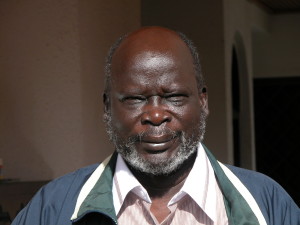 John Garang, Nairobi (January 2003); photograph by Eric Reeves
John Garang, Nairobi (January 2003); photograph by Eric Reeves
I was fortunate to meet with Garang on more than half a dozen occasions, twice for extended one-on-one discussions of South Sudan and the broader issues of Sudan, once in his home in Nairobi. I found Garang highly intelligent, clear in vision, disciplined in his thinking, and ultimately charismatic, a word I am not accustomed to using. I was and am well aware of the accusations of an authoritarian bent in Garang, and I don’t doubt it. Given the challenges of conducting a guerilla war against a genocidal regime, and at the same time preparing for the possibility of an eventual Government of South Sudan, Garang was under enormous pressure. He was demanding, insistent, but always disciplined; I know of no evidence of a man possessed by demons or given to gratuitous violence. De Waal, whose animus toward Garang is of longstanding, sees him as “ruthless” (a word he uses twice), “completely intolerant of dissent” (a judgment de Waal is simply not in a position to make), and most tellingly declares that:
“And [those who advocated on behalf of the Garang and the SPLA/M knew perfectly well that] leader John Garang [merely] spoke the language of equality, of democracy, of freedom. Now, other liberation movements around the world—take the ANC of Nelson Mandela—have insisted that they should hold themselves to a higher moral standard than their adversaries. They will not sink to the level of the oppressor. They will behave better. They will have deeply entrenched principles of human rights, during the struggle, they will not postpone morality, freedom, progress until they win.”
This ecstatic representation of the African National Congress will be troubling to many who have watched the ANC, after the dismantling of apartheid and the retirement of Nelson Mandela from public life, become something other than an exemplar of freedom and tolerance, or ideal supporter of human rights (consider South Africa’s relationship with Mugabe’s Zimbabwe).
South Africa’s President Jacob Zuma, friend of Zimbabwe’s Robert Mugabe and Sudan’s Omar al-Bashir
But de Waal has no time to consider qualifications as he hastens on to the judgment he is so eager to render:
“Not [so] the SPLA, and the ‘International Friends of the SPLA.’ Instead of holding the SPLA to a higher standard than its adversary, they forgave it its crimes because of the perceived justice of its cause. They held it to [sic] high esteem but to low standards.”
Historical accuracy again seems to have slipped away from de Waal here as in his anger he apparently conflates the SPLA/M of today with John Garang, who died in a helicopter crash ten years ago—ten years ago. To hold him accountable for the undoubted mistakes, corruption, and human rights abuses of the SPLA/M of today is simply perverse. There is no telling what the fate of South Sudan would have been had Garang not died, but it is worth recalling that on his first visit to Khartoum (July 2005) as First Vice President of Sudan he was greeting with wild enthusiasm by more than 1 million people, a great many of them not people displaced from the South, although the reaction of Southerners as recorded by all news agencies was of joy, happiness, and relief.
The SPLA/M, Past and Present
It is all too clear that de Waal, in speaking about current events, is still disposed to allow his animus toward Garang to produce distorting conflations with the SPLA/M leadership of today. It also leads him to deeply and consequentially inaccurate characterizations of the Khartoum regime. Speaking of past U.S. “practical moral, political support to the SPLA, including a host of measures intended to isolate and weaken Khartoum,” de Waal immediately proceeds on to a claim of surpassing disingenuousness, indeed mendacity:
“And even though events have changed—Khartoum stopped supporting terrorism, Khartoum signed peace agreements—the SPLA did not turn out to be a force democracy and human rights.”
However we assess the SPLA/M of today, it is important to note how inaccurate de Waal’s claim about Khartoum is, and how absurd it is as a basis for judging the SPLA/M.
A wealth of evidence makes clear that Khartoum does in fact still supports terrorist groups, radical Islamist groups, jihadis, and extremists of various sources. Sudan is one of only three countries that will remain on this year’s U.S. State Department list of state sponsors of terrorism (along with Syria and Iran, with which the Khartoum regime leadership desperately wants a “strategic relationship,” despite supporting Saudi Arabia in its fight against the Tehran-backed Houthis in Yemen). Khartoum has allowed Sudan to be used as a conduit for weapons from Iran to Hamas in Gaza, and still allows Hamas to operate openly in Sudan.
But it is de Waal’s casual noting that “Khartoum signed peace agreements” that marks out a deeply disturbing willingness to abuse facts. Khartoum has indeed signed a host of peace agreements, and like all agreements the regime has signed over the past 25 years, they have proved worthless. The National Islamic Front/National Congress Party regime has never abided by a single agreement it has signed with any Sudanese party—not one, not ever. And de Waal knows this full well.
Khartoum’s bad faith is clear whether we are speaking of the Comprehensive Peace Agreement (abrogated on multiples accounts by Khartoum, most egregiously the Abyei Protocol, but also including border delineation, wealth- and power-sharing before secession, and a range of security measures); or the Darfur Peace Agreement (Abuja, 2006); or the Eastern Sudan Peace Agreement (October 2006); or the agreement known as the Doha Document for Peace in Darfur (July 2011); or the Status of Forces Agreement with the UN/African Union Peacekeeping Force (UNAMID); or various humanitarian access agreements—the list goes on and on. To adduce the fact that Khartoum has simply signed agreements as evidence of anything having changed in Sudan, or the regime, is intellectually dishonest, indeed a disgrace. It is thus the height of arrogant self-righteousness for de Waal to conclude his interview with Al Jazeera by declaring:
“I think when the advocates for South Sudan, both inside the government and outside the government, reflect on the role they’ve played over the last 20 years, they need to ask themselves some very, very searching questions about their own responsibilities for enabling the South Sudanese political, military elite to construct such a profoundly corrupt and abusive system of government. It’s really quite shocking.”
What de Waal Ignores
This strident assignment of blame ignores a great many features of the history of the ten years since John Garang’s death and indeed the decade preceding. Most notably it ignores the efforts by Dagne, Prendergast, and myself—separately and together—to speak forcefully and publicly to the leadership of the Government of South Sudan and the leadership of the SPLA/M, as well as to offer advice on economic development most likely to avoid the temptations of corruption in the face of sudden, massive oil revenues—a formula for disaster in too many Africa countries.
It ignores the efforts of many “advocates for South Sudan,” a number of them based in the region—including, importantly, the churches and the South Sudan Council of Churches in particular—to speak out against corruption. It ignores the efforts by NGOs and others to bring pressure to bear for reform. It ignores the work of human rights groups over the past several years in calling attention to abuses, especially Amnesty International and Human Rights Watch. And it ignores the broader efforts on behalf of the marginalized regions of Sudan that have distinguished our work, our advocacy, and the numerous occasions on which we have testified before the Congress. All of Sudan has been our concern, not just South Sudan, as de Waal would have it.
De Waal is unaware of the quiet work behind the scenes because he was nowhere on the scene in South Sudan. Otherwise he might know that in 2006, shortly after the death of Garang, Dagne, Prendergast and I pushed for a meeting with the leadership. Dagne (as Chair), Roger Winter (another signatory of the June 2013 open letter to Savla Kiir, and a champion of South Sudan for more than twenty-five years), Hilde Johnson of Norway (former Special Representative of the Secretary-General and Head of the United Nations Mission in the Republic of South Sudan), and Congressman Donald Payne, Sudan’s most loyal friend in the U.S. Congress—all met with the SPLM Political Bureau in Juba to discuss precisely the issue of corruption about which de Waal’s claims to be concerned.
Such efforts were of longstanding. In 1994 Prendergast was primary author of a Human Rights Watch monograph that chronicled the human rights abuses of both the Khartoum regime and the SPLA. For his efforts Prendergast was actually jailed by the SPLA for a period of time. He has been no less critical of the SPLA on human rights issues subsequently, if speaking more often behind the scenes, as is the case, perforce, for myself. Dagne drafted a resolution in 1993 while an aide to Congressman Harry Johnston of Florida; in the Resolution the following language appears:
Whereas all factions of the Sudan People’s Liberation Army also are responsible for serious abuses of human rights, including the killing in September 1992 of 4 foreign citizens, the reported killing of 87 civilians by the Nasir faction of the Sudanese People’s Liberation Army in January 1992 in Pagarau, and the reported killing of 200 “deserters” by the Torit group near Tonj in Bahr al-Ghazal;
Resolved by the House of Representatives (the Senate concurring),
That the Congress,
(1) strongly condemns the Government of Sudan for its severe human rights abuses, and calls upon that government to improve human rights conditions throughout the country;
(2) deplores the internecine fighting among the Sudan People’s Liberation Army factions which has caused untold suffering for the people of southern Sudan;
(3) calls on all factions of the Sudan People’s Liberation Army to cease hostilities and resolve their differences through peaceful means;
(4) urges the Government of Sudan and the Sudan People’s Liberation Army factions to provide full access for and to cooperate with relief organizations… (House Concurrent Resolution 131, August 3, 1993)
Dagne authored other letters in the 1990s concerning human rights abuses by the SPLA, letters that Johnston and other Congressmen would sign and deliver. All these efforts are excluded from de Waal’s distorted narrative.
Perhaps most tellingly, de Waal does not know of Dagne’s devoted, personally costly, and dangerous efforts to head up efforts to address corruption in the Government of South Sudan and the SPLA/M elite following the CPA, something that he and I had been discussing for several years, with our concerns expressed directly to the GOSS. Indeed, Dagne finally went to Juba—as de Waal most certainly did not—having given up his job at the Congressional Research Service precisely to address as fully and vigorously as possible the problem of corruption. It was highly dangerous work because of the vested interests of those who had profited from and continued to profit from corruption—Dagne’s life was repeatedly threatened, and he was once forcibly expelled from South Sudan by the armed force of a corrupt government official. In my own view, Dagne’s efforts were nothing less heroic.
Ted Dagne in his Congressional Research Service office; Dagne is an unsung American hero in responding to Sudan’s ongoing and complex crises; he has given more than anyone I know (photograph by Eric Reeves)
De Waal’s word “advocates” appears to be directed primarily at Dagne, Prendergast and myself, as well as a few other Americans, accusing us of a “shocking” enabling of a “profoundly corrupt and abusive system of government.”
What is shocking is that such efforts as we have made mean nothing to de Waal because they don’t fit his pre-packaged narrative about Sudan and South Sudan. He declares at one moment in the Al Jazeera interview: “[a] simplified moral script makes a very bad policy.” But dishonesty and ignorance make for even worse policies.
*****************************
Appendix A:
[a] Bahr El Ghazal and the Famine of 1998, Human Rights Watch (1999):
Systematic human rights abuses were the direct cause of the famine in Bahr El Ghazal. The famine agents are the government of Sudan, including the muraheleen or militia of the Baggara (Arab cattle nomads), and the rebel Sudan People’s Liberation Army (SPLA). The Dinka warlord Kerubino Kuanyin Bol, who has twice changed sides in one year, provoked famine mostly as the leader of a government militia. The Bahr El Ghazal famine affected—and continues to assail—approximately one million people, a majority of them Dinka, the largest ethnic group in Sudan….
The civil war is waged by means that expressly violate human rights and humanitarian law—the laws of war. The government’s counterinsurgency plan in Bahr El Ghazal, the central Nuba Mountains, and elsewhere is to attack civilians as a means to destroy the rebels social base, displacing, killing, or capturing civilians and stripping them of the meager assets that provide the means of survival in a harsh land. An important instrument of this policy are ethnic militias armed by the government to divide southerners against each other and enable non-southerners to attack southern civilians perceived to support rebel groups. The impoverished Baggara militias who help carry out the plan in Bahr El Ghazal are motivated by the prospect of booty: Dinka cattle, grain, children, and women. The Baggara, who live north of the Bahr al Arab River (which the Dinka call the Kiir River), also saw they could freely use the traditional Dinka lands in northern Bahr El Ghazal and southern Kordofan, which have good grazing land and water sources, if the Dinka were displaced from them.
[b] Human Rights Watch, Congressional Testimony of July 28, 1998: “The Looming Famine In The Nuba Mountains, Central Sudan”: (all emphases in bold have been added—ER)
The National Islamic Front [NIF, currently the National Congress Party—ER] wages a war of attrition by starvation and displacement of the Nuba. Having failed to defeat the SPLA militarily, in 1992 the NIF declared jihad or holy war on opposition Nuba, even the Muslims-and Nuba commander and governor Yousif Kuwa is a Muslim (although his children are Christians, which he has never opposed; this tolerance is typical of the Nuba in SPLA territory).
In 1992 the government set up “peace camps” ringing garrison towns and forced rural Nuba it captured to live there, under guard lest they escape to their homes. In the camps, women and girls are subjected to sexual abuse by [Khartoum’s] PDF [Popular Defense Forces] and soldiers. All family members are punished if one manages to escape. International relief is provided in the Nuba Mountains, but only on one side: the government side. Some food, usually an inadequate amount, goes to peace camps.
The government has refused and delayed all UN efforts to conduct even a needs assessment in SPLA areas, despite the most recent pledge (May 1998) to UN Secretary Kofi Annan that such a mission could proceed. After a compromise was reached regarding the composition of the assessment team and their point of departure, the government denied permission for the team to proceed, and the visit has now been postponed indefinitely. This time the government uses the pretext of an ambush killing three relief workers that must be investigated before anything else happens; responsibility for the ambush is not clear. Many see the UN’s failure to push for equal access to the rebel areas of the north as colluding in the government’s attempts to starve the Nuba into submission.
At the same time as it delays food relief for the needy in SPLA areas of the Nuba Mountains, the government is engaging in scorched earth tactics against this civilian population, looting animals and crops, and burning what abductees cannot carry. It also displaces those living in fertile valleys into the higher and less fertile land. Now hunger is driving Nubas to the garrison towns and peace camps, in search of food and clothes. Because the Nuba Mountains are isolated from any international border or SPLA area, the government has successfully cut off most ordinary commerce to the area, so basic items such as used clothes, salt and sugar are rarely available, at any price.
